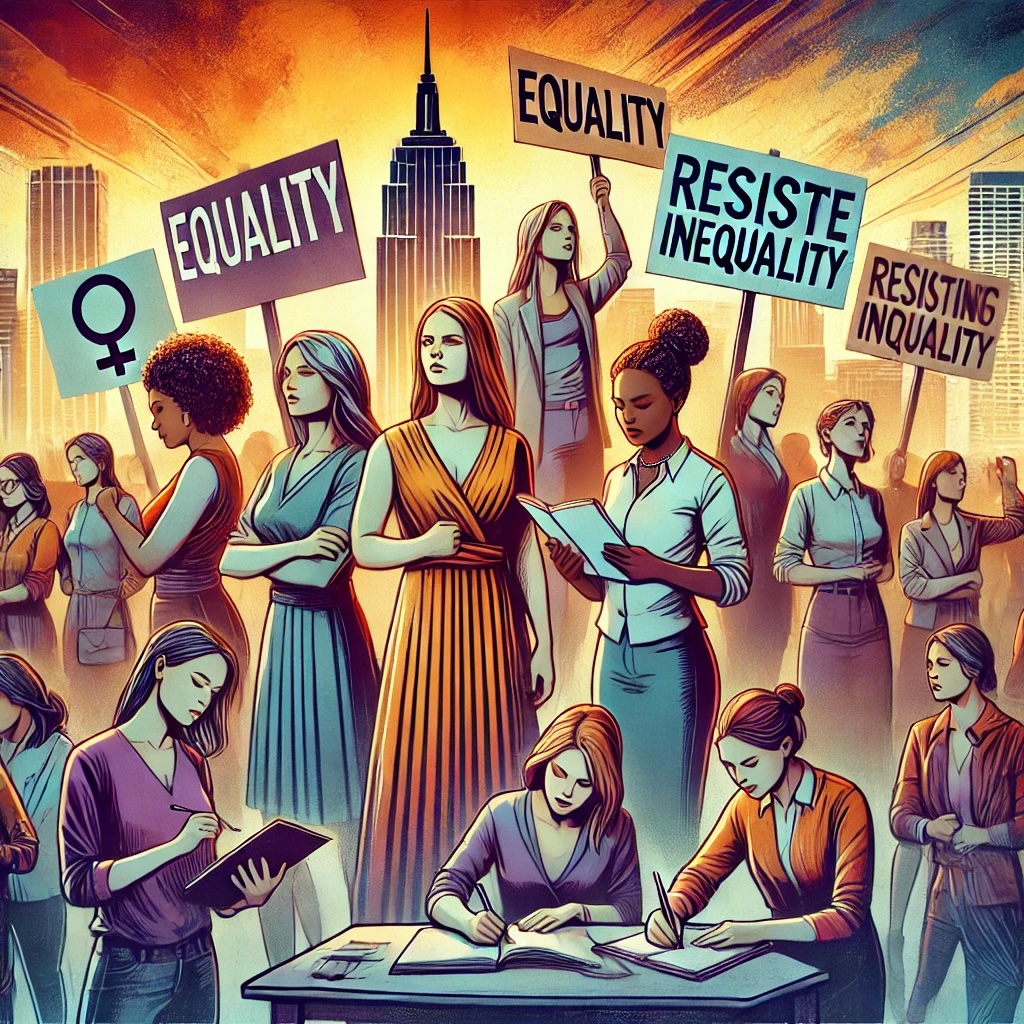Changes in the status of women in China from ancient times to the present day

In ancient times, Pre-Qin period (c. 21st century BC) to Ming and Qing periods (17th to early 19th century AD), women were largely confined to domestic roles, following Confucian ideals like the “Three Obediences and Four Virtues” (三从四德): A woman was to be subordinate to her father in youth, her husband in maturity, and her son in old age[1], and exhibiting virtues such as morality, proper speech, modesty, and diligent work. During this period, women had the highest status in the Tang dynasty and were generally more liberal in dress and behaviour[2], and there were some women, such as Wu Zetian (China’s first and only legally recognised female emperor) who came to power and challenged patriarchal norms.
Towards the end of the Qing Dynasty (19th century), reformist thinkers began to advocate for women’s education and against practices such as foot binding.
The fall of the Qing Dynasty (1912) at the beginning of the twentieth century and the Republican period sparked discussions on women’s rights. The May Fourth Feminist Movement (1919) criticised traditional gender roles and called for more freedom for women[3].
During the communist era (1949 to the present), the Communist Party under Mao Zedong proclaimed that ‘women can hold up half the sky’3, and the 1950 Marriage Law prohibited arranged marriages, concubinage and child brides, while advocating equality between men and women.
Reform and opening up (1978-present), market reforms have created more business and entrepreneurial opportunities for women, but also challenges such as discrimination in the workplace.
In contemporary China, laws such as the Law against Domestic Violence (2016)[4] and the Gender Equality Campaign have been implemented, albeit with varying degrees of enforcement.
[1] Joanne Birdwhistell, Mencius and Masculinities: Dynamics of Power, Morality, and Maternal Thinking, 2007, https://doi.org/10.1353/book5171.
[2] Wikipedia Contributors, “Gender Inequality in China,” Wikipedia (Wikimedia Foundation, December 11, 2024), https://en.wikipedia.org/wiki/Gender_inequality_in_China#.
[3] Yuhui Li, “Women’s Movement and Change of Women’s Status in China,” China. Journal of International Women’s Studies 1, no. 1 (January 2000): 30–40, https://vc.bridgew.edu/cgi/viewcontent.cgi?article=1626&context=jiws.
[4] Xinhua News Agency, “Anti-Domestic Violence Law of the People’s Republic of China (Presidential Order No. 37),” Translate.goog, December 28, 2015, https://www-gov-cn.translate.goog/zhengce/2015-12/28/content_5029898.htm?_x_tr_sl=zh-CN&_x_tr_tl=en&_x_tr_hl=en&_x_tr_pto=sc.
Bibliography
Birdwhistell, Joanne. Mencius and Masculinities: Dynamics of Power, Morality, and Maternal Thinking, 2007. https://doi.org/10.1353/book5171.
China Urban Development. “Understanding China’s Urbanization Trends.” YouTube video, 15:45. October 20, 2022. Accessed June 10, 2024. https://youtu.be/QX4Oe4cI04g?si=1qmu38qTJ725uvUz.
Li, Yuhui. “Women’s Movement and Change of Women’s Status in China.” China. Journal of International Women’s Studies 1, no. 1 (January 2000): 30–40. https://vc.bridgew.edu/cgi/viewcontent.cgi?article=1626&context=jiws.
Wikipedia Contributors. “Gender Inequality in China.” Wikipedia. Wikimedia Foundation, December 11, 2024. https://en.wikipedia.org/wiki/Gender_inequality_in_China#.
Xinhua News Agency. “Anti-Domestic Violence Law of the People’s Republic of China (Presidential Order No. 37).” Translate.goog, December 28, 2015. https://www-gov-cn.translate.goog/zhengce/2015-12/28/content_5029898.htm?_x_tr_sl=zh-CN&_x_tr_tl=en&_x_tr_hl=en&_x_tr_pto=sc.



